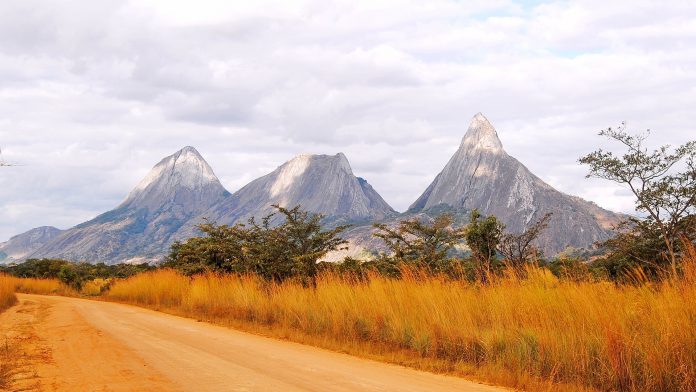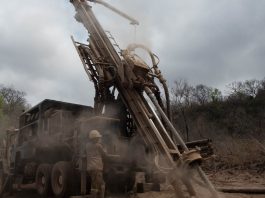Rare earth acquisition company, Altona Rare Earths, announces they are to list on the LSE main market for listed securities.
Altona Rare Earths plc (Altona), a mining exploration company focused on the evaluation, acquisition, and development of rare earth elements (REE), with mining projects in Africa, confirms its intention to apply for admission of its ordinary shares to the standard segment of the official list and trading on the London stock exchange’s (LSE) main market for listed securities. Admission to trading of the company’s ordinary shares on the AQSE growth market will be cancelled simultaneously with admission. It is also proposed that on admission, the company will change its TIDM to REE.
Rare earth acquisition projects in Southern and Eastern Africa
Concurrently with admission, the company is seeking to raise funds to satisfy its working capital requirement for a period of 12 months from admission, by way of a placing of new ordinary shares. Altona will use the fundraising proceeds to finance its current and future rare earth mining projects in Southern and Eastern Africa.
Directors believe that an LSE listing will provide access to the future capital it will need to develop its asset portfolio and be beneficial when negotiating rare earth acquisition in Africa. It will also increase liquidity in the company’s shares. The Directors currently anticipate that admission will become effective during May 2022.
“Our move to the LSE Main Market signals the greater maturity of the Altona business and the increasing opportunity within the sector,” stated Christian Taylor-Wilkinson, Chief Executive of Altona. “It supports our strategy to develop the significant rare earth asset at Monte Muambe, where we have seen exploration success while pursuing other rare earth exploration and acquisition opportunities.
“Our goal is to fill a significant gap in the market as global demand for NdPr and the other critical metals continues to rise. Altona has spent the last two years building its African infrastructure, including local partners, highly experienced Directors and resource ministry relations.
“The growth of this rare earth asset platform means now we can both be nimble and responsive to opportunities, as well as able to implement long-term development plans across different countries within Africa.”
Rare earth critical metals
The Rare Earths mining sector is one of the most in demand and fastest-growing industries in the world, yet it is also one of the least known about.
This classification of metals, which lies at the bottom of the periodic table and is categorised as ‘Rare Earths,’ is made up of 17 elements and is used in a vast array of industries, manufacturing processes, and technologies – becoming ‘everyday’ end-product items. However, it is a sub-set of these elements, those known as the ’critical metals’ – those used in the production of permanent magnets – which are most in demand. These metals represent only 20% of the total rare earths consumed but 80% of the value. They are vital to many high technology applications, especially in renewable energy.
The individual prices of these metals vary widely. Those utilised in glass polishing and ceramics, for example, and cost only dollars per kilo, whereas the critical metals – Neodymium (Nd), Praseodymium (Pr), Dysprosium (Dy) and Terbium (Tb) — now have prices ranging from hundreds of dollars to thousands of dollars per kilo.
These prices have significantly risen over the last decade and are set to increase further as demand, coupled with supply chain issues, increases.
The wider market context helps us understand these extraordinary prices. The growth of electric vehicles (EVs) and the global roadmap for replacing traditional energy sources with sustainable renewable energy (in the form of wind turbines) is driving demand. At last November’s COP-26 Summit, world leaders set out a timeframe to remove internal combustion engines from car production lines – some countries, including the UK, elected as short a timeframe as 2030.
At the heart of all EVs are two key components: the battery and the electric motor drivetrain. It has been noted that the drivetrain is where you will find rare earths. Each EV requires kilos of rare earths to make a magnet powerful enough to power the drivetrain which propels a vehicle. Similarly, with wind turbines, an 80-metre turbine requires hundreds of kilos of critical metals to produce the permanent-magnet synchronous generators. There is an additional benefit from using rare earths in wind turbines; the power units they create require very little maintenance, which is ideal for offshore wind farms, where regular access is scarce, and costs are high.
EV sales rocketed in 2021, despite the pandemic, with almost two million new cars registered around the world, taking the total to over 10 million vehicles. Almost 20% of new UK sales so far in 2022 are EVs or hybrids. By 2050, the number of EVs on the road is expected to be over 700 million vehicles, accounting for over 60% of all cars, globally. For the foreseeable future, there is no alternative to rare earths.









